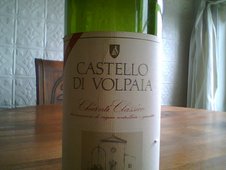What does the over-saturated American spirits market need? Navy Strength Gin, of course.
No, seriously, we do. Bartenders have been asking for this quintessentially British, overproof product for years. Drinkers, too, like me. But if you wanted it, you had to smuggle in a bottle of Plymouth. No longer. New York Distilling Company's Perry's Tot is already here. And Plymouth and Hayman's versions will be here by the end of summer. (Also, I've been informed, there is a Colorado-produced navy strength gin available. But it's sold only in some western and southern states.)
Here's my New York Times Diner's Journal story:
Gin Ahoy! A Navy-Strength Fleet Arrives
By ROBERT SIMONSON
As this year marks the 200th anniversary of the War of 1812, perhaps its appropriate that it be the annum when America becomes awash in navy strength gin.
As the name hints, navy strength gin is a powerfully alcoholic expression of the juniper-informed spirit, typically clocking in at 57 percent alcohol by volume. (Regular London dry style gin typically ranges between 40 percent and 45 percent.) Beginning in the early 19th century, it was supplied to the British Royal Navy by distillers such asPlymouth. The declared reason for the high alcohol content was that that was the proof level at which the ship’s gunpowder could still be fired should it accidentally get soaked with booze.
Today’s mixologists aren’t so worried about their gunpowder. They do, however love overproof spirits, leading for a call in recent years for navy strength gin to breach America’s shores. That cry has been answered in triplicate. By the end of 2012, three versions of the hearty gin will be available. The first out of the gate is, in a twist, an American product: Perry’s Tot, released last December by the New York Distilling Company, of Brooklyn. Royal Dock Gin, made by the same British company that produces Hayman’s Old Tom Gin, is expected to arrive in April. And Plymouth, arguably the most famous of the navy strength gins, is set for a late summer launch.
Allen Katz, one of the founders of New York Distilling, remembers his first sip of navy strength. “My first introduction was a trip to Plymouth about six years ago. I was familiar with the name but not its history. I thought, for 57 percent alcohol, this is very drinkable. I remember the pleasantness of the spiciness.”
Both Plymouth and Royal Dock claim a long history with wetting the whistles of the British admiralty. However, official ties with the Royal Navy ended shortly after World War II. For a time afterward, Plymouth would provide “commissioning kits” to new ships. According to Simon Ford, director of trade outreach and brand education at Pernod Ricard USA (Pernod owns Plymouth), the kits “were a wooden chest that held gin, tonic and bitters.
“There were glasses, a ‘glug glug jug,’ used for mixing the drinks, and a pennant that the captain would fly to let visitors know they could join for drinks.”
“If they started commissioning new ships,” Mr. Ford added, “we would probably make commissioning kits for them again.”







